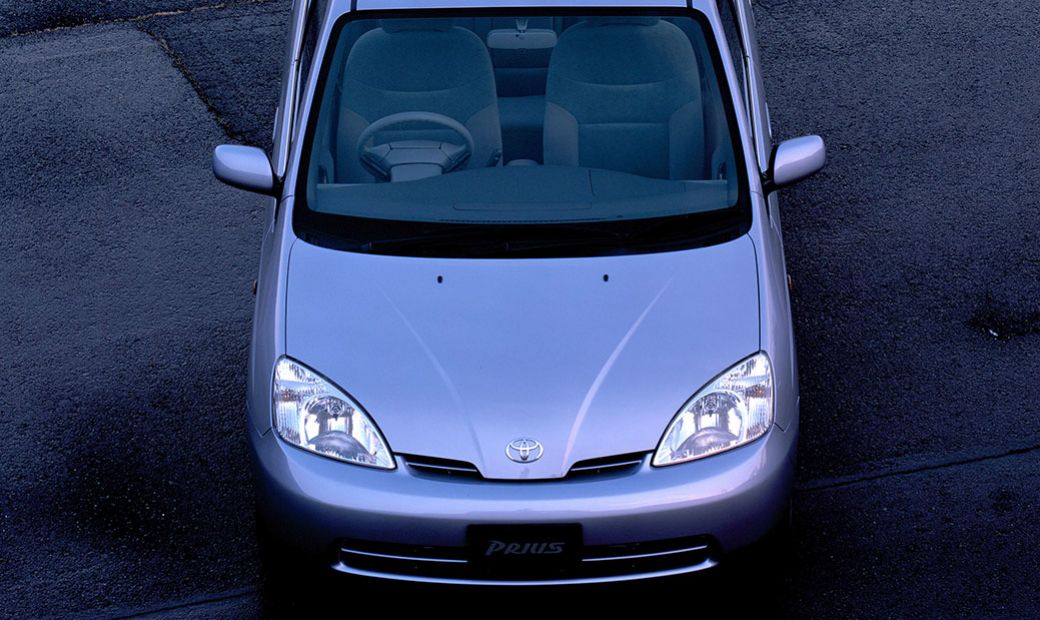Please fill in some of the data provided below to receive the latest Toyota-related news and information in your email.


No Turning Back
In March 1996, veteran engineer Takehisa Yaegashi was appointed leader of the hybrid system team. Even with his talents to bolster the development structure, the G21 members were in a race against time. They weren't confident that the deadline at the end of 1997 could be met. Amid the anxiety, the development team was stunned by the company's announcement at a media briefing on March 25, 1997 at a hotel in Akasaka, Tokyo.
At a technology announcement for THS, President Okuda boldly announced in his opening remarks that Toyota had successfully developed a hybrid system as an answer to the 21st century's environmental problems. The press release promised about twice the fuel efficiency of a conventional car and a new hybrid model within the year. Ogiso couldn't conceal his surprise the next day when he saw the newspaper coverage.
"The media was reporting that THS could get 28 kilometers to the liter and the price would be ¥500,000 more than the Corolla even though we hadn't released any specific figures at the press conference," recalls Ogiso. "We hadn't yet reached 28 kilometers per liter, and we couldn't say at that time that it was attainable. The company had decided to launch in December 1997, and at that juncture, not everything was going according to plan. There was a point earlier in the project where we had asked management to postpone the launch if development became too difficult. But now that the schedule was announced to the public, there was no turning back."
By August 1997, testing was nearly complete. A dedicated line began producing prototypes at the Takaoka Plant from September. The engineers were reassigned to the plant to make design changes and pave the way for production. The design and development team had involved the production division in the project at an early stage, which kept the late-stage design changes to a minimum.
Just in Time for the 21st Century
The press conference to unveil the Prius was held October 14, 1997 at a hotel in Roppongi, Tokyo. The conference room was filled with not only auto industry journalists, but also the general media. The proudest accomplishment of the team was the achievement of 28 kilometers per liter under the Japanese 10-15 test cycle. They had met their promise of delivering double the fuel efficiency of a similar gasoline engine car. What's more, the price tag of ¥2.15 million was even lower than what the media had reported back in March.

The announcement sparked public interest in the Prius at the Tokyo Motor Show held from October 22, drawing throngs of visitors to get a glimpse of the car. The Prius was named Japan Car of the Year in 1997 by an overwhelming margin of nearly 200 votes separating it from second place. At the COP3 conference in December, the Prius was used to taxi participants between venues. The global media was captivated, peppering Toyota executives and engineers with questions about the car. A new advertising campaign accompanied the debut, with the catchphrase "Just in time for the 21st century" to emphasize the Prius's position as a car to usher in the next century. The G21 project had ended with a resounding success.
"The line-off ceremony went smoothly on December 10," says Ogiso. "Our original sales plan was 1,000 units a month in Japan. The initial orders were large, and we expanded capacity after that, averaging production of about 1,500 units a month for the first generation. We had no idea whether it would sell or not, so it felt good to see sales of over 1,000 units a month. We had originally planned to debut the Prius in Europe and North America from 2000 along with the partial redesign, so there was still a lot of work left after sales began. We had developed a hybrid from scratch in a little more than two years, so we thought the next model in two years' time would be easy. However, we needed to make the Prius ready for high-speed operation in Europe and for temperatures of up to 50 degrees Celsius in Death Valley in the United States. And with the partial redesign, we decided to make major changes to the hybrid system, so we didn't have the luxury of time."
Hybrid Car Sales Exceed 10 Million Units
The Prius remained in the spotlight after the launch, with orders in the initial month of sales reaching 3,500 units, three times the target. The ¥2.15 million price tag may have been less than the market expected, but it was significantly higher than other cars in its class. Despite this, the flood of orders reflected the excitement among environmentally conscious consumers.
The first completely redesigned Prius arrived in 2003, and the monthly sales target was reset to 5,000 units. Again, consumer clamor for the new model outstripped projections, with global monthly sales surpassing 10,000 units. Hollywood stars were seen arriving for red carpet events in their Priuses, further raising interest among consumers concerned about the environment.
"The first-generation Prius made a splash, but it was still a niche car that was far from the mainstream," notes Ogiso. "There were discussions inside the company on whether we really needed to release a second generation. However, after listening to consumers, we realized that the reaction among consumers in the know (in regard to the environment) in Japan and the United States was positive. The second generation represented the next evolution of the hybrid system, improving both fuel efficiency and drivability, and succeeded in further raising the Prius's presence in the global market."
The development teams continued to develop the Prius, and by the fourth generation released in 2015, the car boasted fuel efficiency of more than 40 kilometers per liter. By then, nearly half the cars sold by Toyota in Japan were hybrid cars, and by the end of January 2017, cumulative Toyota hybrid car sales had exceeded 10 million units.

"The acquisition and nurturing of core technologies through in-house creation made a big difference with profound benefits that can be seen to this day," says Ogiso in looking back on the Prius achievement. "When you have the same people working for years within the same company who develop a discerning eye for technology, it makes a tremendous difference in the product you deliver. The Prius development experience played a pivotal role in the development of the Mirai fuel cell vehicle launched in 2014. After working on projects for 20 years, you get an instinct for anticipating what needs to be done next. Looking back at those early days of my career working on Prius development, I recall the pure agony of the challenges we faced, and yet I feel the work continues today."
Present Day
The Prius, having overcome so many challenges, turned 20 years old in 2017. The experience gained from acquiring and nurturing core technologies through in-house creation has contributed to the development of new technology in cooperation with suppliers. For the fourth-generation Prius, performance improvement and cost reduction of each unit was realized with the cooperation of various suppliers. The Prius has been beloved and fostered by so many drivers around the world and will continue to evolve as a pioneer paving the way for cars in the future. Drive on, Prius.
Media/Journalist Contact : [Memuat email...]
Non Media / Non Journalist Contact : [Memuat email...]

© 2024 Toyota Motor Manufacturing Indonesia. All Rights Reserved.
